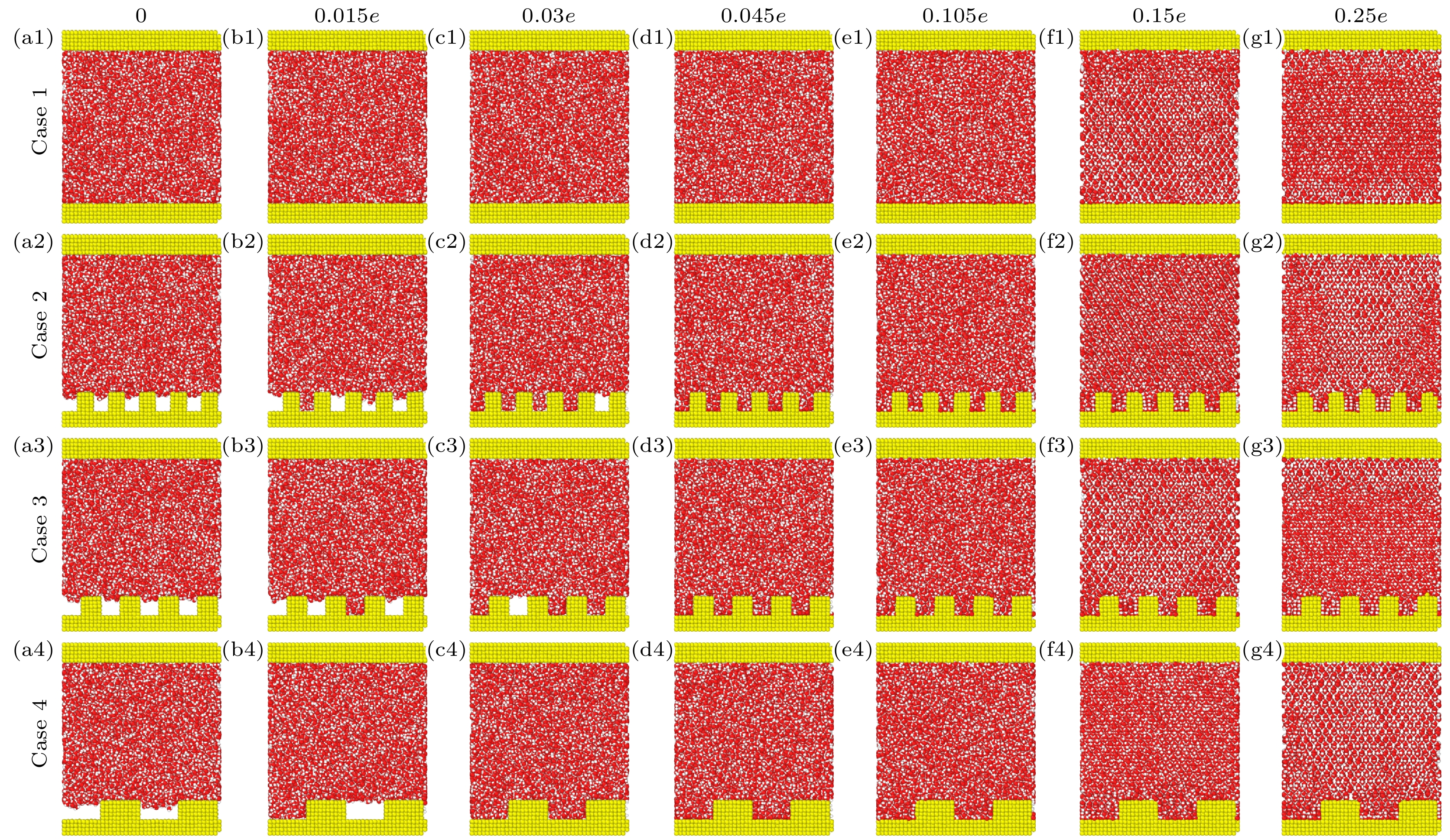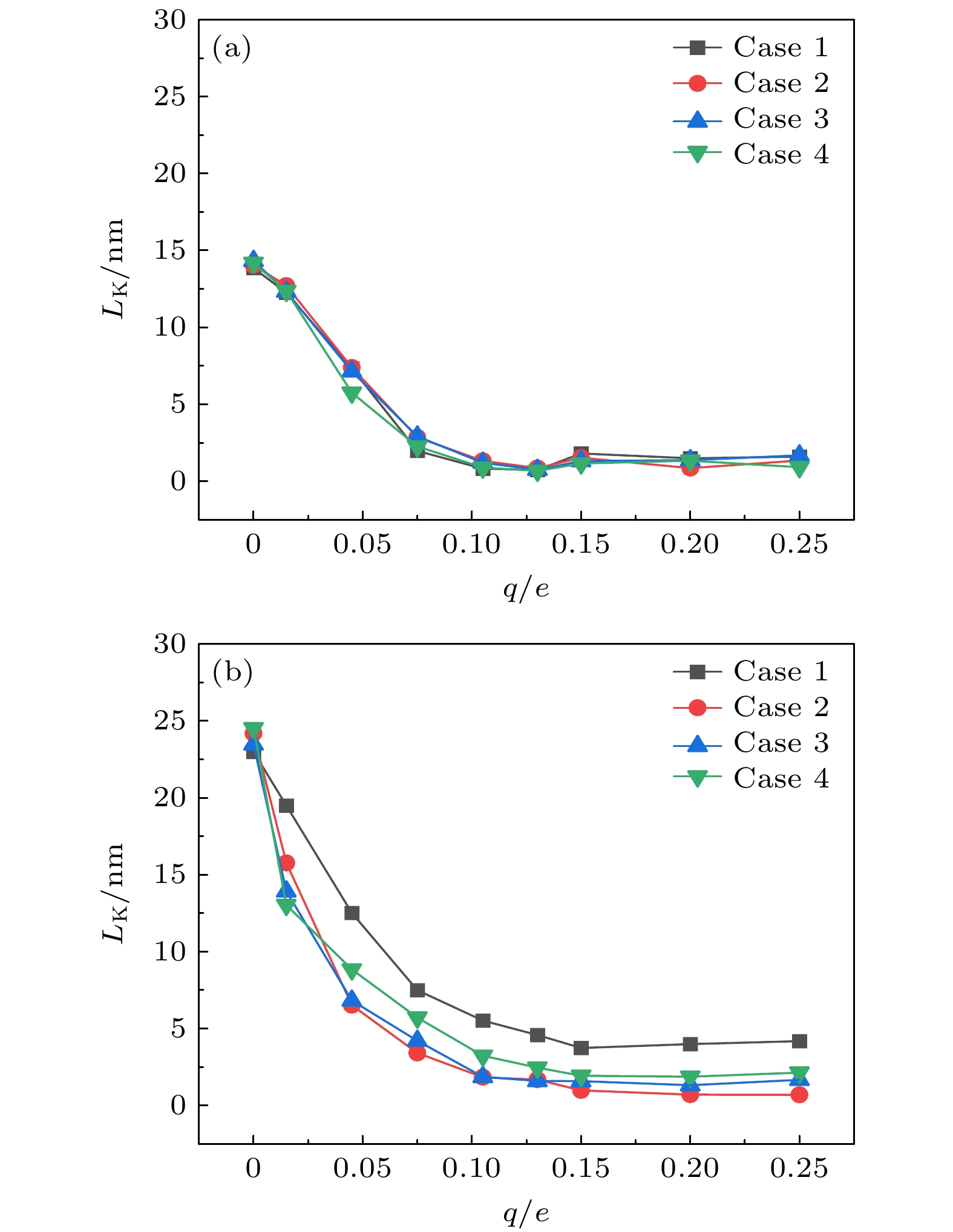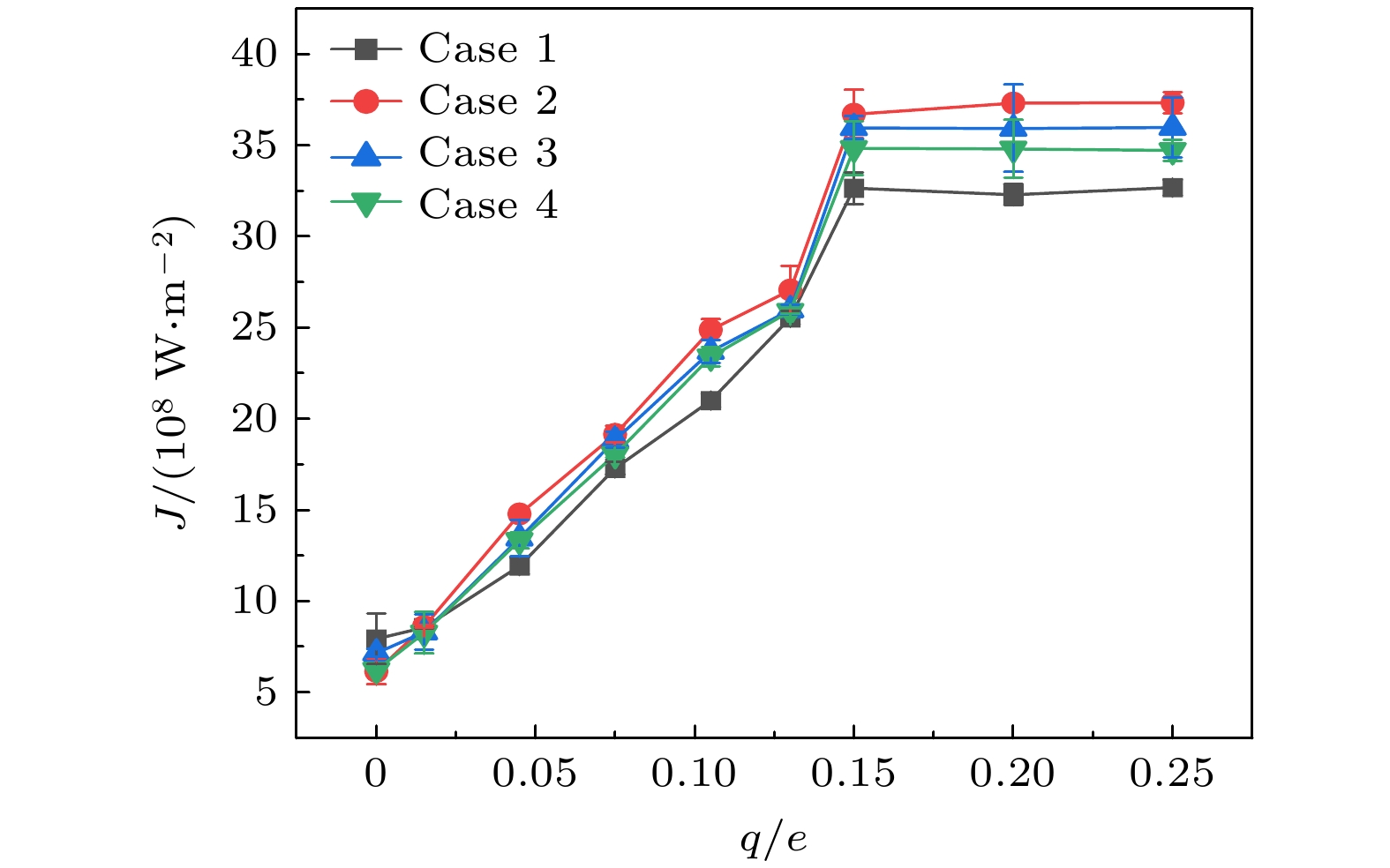-
With the size of high-performance electronic device decreasing (down to nanoscale), and the accompanying heat dissipation becomes a big problem due to its extremely high heat generation density. To tackle the ever-demanding heat dissipation requirement, intensive work has been done to develop techniques for chip-level cooling. Among the techniques reported in the literature, liquid cooling appears to be a good candidate for cooling high-performance electronic devices. However, when the device size is reduced to the sub-micro or nanometer level, the thermal resistance on the solid-liquid interface cannot be ignored in the heat transfer process. Usually, the interfacial thermal transport can be enhanced by using nanostructures on the solid surface because of the confinement effect of the fluid molecules filling up the nano-grooves and the increase of the solid-liquid interfacial contact area. However, in the case of weak interfacial couplings, the fluid molecules cannot enter into the nano-grooves and the interfacial thermal transport is suppressed. In the present work, the heat transfer system between two parallel metal plates filled with deionized water is investigated by molecular dynamics simulation. Electronic charges are applied to the upper plate and lower plate to create a uniform electric field that is perpendicular to the surface, and three types of nanostructures with varying size are arranged on the lower plate. It is found that the wetting state at the solid-liquid interface can change from Cassie state into Wenzel state with strength of the electric field increasing. Owing to the transition from the dewetting state to wetting state (from Wenzel to Cassie wetting state), the Kapitza length can be degraded and the solid-liquid interfacial heat transfer can be enhanced. The mechanism of the enhancing hart transfer is discussed based on the calculation of the number density distribution of the water molecules between the two plates. When the charge is further increased, electrofreezing appears, and a solid hydrogen bonding network is formed in the system, resulting in the thermal conductivity increasing to 1.2 W/(m·K) while the thermal conductivity remains almost constant when the electric charge continues to increase.
-
Keywords:
- electrowetting /
- nanostructure /
- external electric field /
- solid-liquid interfacial thermal resistance /
- molecular dynamics
[1] Razeeb K M, Dalton E, Cross G L W, Robinson A J 2018 Int. Mater. 63 1
 Google Scholar
Google Scholar
[2] Pop E 2010 Nano Res. 3 147
 Google Scholar
Google Scholar
[3] Kapitza P L 1971 J. Phys. U.S.S.R. 4 181
 Google Scholar
Google Scholar
[4] Shenogina N, Godawat R, Keblinski P, Garde S 2009 Phys. Rev. Lett. 102 156101
 Google Scholar
Google Scholar
[5] Harikrishna H, Ducker W A, Huxtable S T 2013 Appl. Phys. Lett. 102 251606
 Google Scholar
Google Scholar
[6] Park S C, Cho H R, Kim D, Choi S H, Choi C, Yu D I 2024 Int. J. Heat Fluid Flow 107 109388
 Google Scholar
Google Scholar
[7] Song G, Min C 2013 Mol. Phys. 111 903
 Google Scholar
Google Scholar
[8] Rashidi M M, Ghahremanian S, Toghraie D, Roy P 2020 Int. Commun. Heat Mass 117 140741
 Google Scholar
Google Scholar
[9] 张程宾, 许兆林, 陈永平 2014 63 214706
 Google Scholar
Google Scholar
Zhang C B, Xu Z L, Chen Y P 2014 Acta Phys. Sin. 63 214706
 Google Scholar
Google Scholar
[10] Chakraborty P, Ma T, Cao L, Wang Y 2019 Int. J. Heat Mass. Tran. 136 702
 Google Scholar
Google Scholar
[11] Yao S T, Wang J S, Jin S F, Tan F G, Chen S P 2024 Int. J. Therm. Sci. 203 109161
 Google Scholar
Google Scholar
[12] Qin S Y, Chen Z X, Wang Q, Li W G, Xing H W 2024 Int. Commun. Heat Mass 151 107257
 Google Scholar
Google Scholar
[13] Cassie A B D 1948 Disscussions of the Faraday Society 3 11
 Google Scholar
Google Scholar
[14] Wenzel R N 1936 Ind. Eng. Chem. 28 988
 Google Scholar
Google Scholar
[15] Bormashenko E 2015 Adv. Colloid Interface Sci. 222 92
 Google Scholar
Google Scholar
[16] Bormashenko E, Pogreb R, Stein T, Whyman G, Erlich M, Musin A, Machavariani V, Aurbach D 2008 Phys. Chem. Chem. Phys 10 4056
 Google Scholar
Google Scholar
[17] 李文, 马骁婧, 徐进良, 王艳, 雷骏鹏 2015 70 126101
 Google Scholar
Google Scholar
Li W, Ma X J, Xu J L, Wang Y, Lei J P 2015 Acta Phys. Sin. 70 126101
 Google Scholar
Google Scholar
[18] Sur A, Lu Y, Pascente C, Ruchhoeft P, Liu D 2018 Int. J. Heat Mass Tran. 120 202
 Google Scholar
Google Scholar
[19] Lippmann G 1875 Ann. de Chim. et de Phys. 5 494
(in Chinese) [20] Orejon D, Sefiane K, Shanahan M E 2013 Appl. Phys. Lett. 102 201601
 Google Scholar
Google Scholar
[21] Daub C D, Bratko D, Leung K, Luzar A 2007 J. Phys. Chem. C 111 505
 Google Scholar
Google Scholar
[22] Song F H, Li B Q, Liu C 2013 Langmuir 29 4266
 Google Scholar
Google Scholar
[23] Lee M W, Latthe S S, Yarin A L, Yoon S S 2013 Langmuir 29 7758
 Google Scholar
Google Scholar
[24] Zhang B X, Wang S L, He X, Yang Y R, Wang X D, Lee D J 2021 J. Mol. Liq. 342 117468
 Google Scholar
Google Scholar
[25] Luedtke W D, Gao J P, Landman U 2011 J. Phys. Chem. C 115 20343
 Google Scholar
Google Scholar
[26] Zhu X Y, Yuan Q Z, Zhao Y P 2014 Nanoscale 6 5432
 Google Scholar
Google Scholar
[27] Sun W, Xu X B, Zhang H, Xu C X 2008 Cryobiology 56 93
 Google Scholar
Google Scholar
[28] Zangi R, Mark A E 2004 J. Chem. Phys. 120 7123
 Google Scholar
Google Scholar
[29] Jinesh K B, Frenken J W M 2008 Phys. Rev. Lett. 101 036101
 Google Scholar
Google Scholar
[30] Ahmad I, Ranjan A, Pathak M, Khan M K 2023 Int. J. Therm. Sci. 192 108440
 Google Scholar
Google Scholar
[31] Lu Y, Liu D 2023 Int J Heat Mass Tran. 208 124055
 Google Scholar
Google Scholar
[32] 胡剑, 张森, 娄钦 2023 72 176401
 Google Scholar
Google Scholar
Hu J, Zhang S, Lou Q 2023 Acta Phys. Sin. 72 176401
 Google Scholar
Google Scholar
[33] Mugele F, Baret J C 2005 J. Phys.: Condens. Matter 17 R705
 Google Scholar
Google Scholar
[34] Plimpton S 1995 J. Comput. Phys. 117 1
 Google Scholar
Google Scholar
[35] Yenigun O, Barisik M 2019 Nanoscale Microscale Thermophys. Eng 4 304
 Google Scholar
Google Scholar
-
表 1 4种纳米结构的参数
Table 1. Parameters of four nanogroove configurations.
d/nm w/nm s/nm Case 1 — — — Case 2 1.02 0.816 0.816 Case 3 1.02 1.02 1.02 Case 4 1.02 2.04 2.04 表 2 L-J势函数的具体参数
Table 2. Parameters of L-J potential.
原子类型 σ/nm ε/eV q O-O 0.3166 0.0068 –0.8476e H-H 0 0 +0.4238e Au-O 0.2867 0.0114 — Au-H 0 0 — -
[1] Razeeb K M, Dalton E, Cross G L W, Robinson A J 2018 Int. Mater. 63 1
 Google Scholar
Google Scholar
[2] Pop E 2010 Nano Res. 3 147
 Google Scholar
Google Scholar
[3] Kapitza P L 1971 J. Phys. U.S.S.R. 4 181
 Google Scholar
Google Scholar
[4] Shenogina N, Godawat R, Keblinski P, Garde S 2009 Phys. Rev. Lett. 102 156101
 Google Scholar
Google Scholar
[5] Harikrishna H, Ducker W A, Huxtable S T 2013 Appl. Phys. Lett. 102 251606
 Google Scholar
Google Scholar
[6] Park S C, Cho H R, Kim D, Choi S H, Choi C, Yu D I 2024 Int. J. Heat Fluid Flow 107 109388
 Google Scholar
Google Scholar
[7] Song G, Min C 2013 Mol. Phys. 111 903
 Google Scholar
Google Scholar
[8] Rashidi M M, Ghahremanian S, Toghraie D, Roy P 2020 Int. Commun. Heat Mass 117 140741
 Google Scholar
Google Scholar
[9] 张程宾, 许兆林, 陈永平 2014 63 214706
 Google Scholar
Google Scholar
Zhang C B, Xu Z L, Chen Y P 2014 Acta Phys. Sin. 63 214706
 Google Scholar
Google Scholar
[10] Chakraborty P, Ma T, Cao L, Wang Y 2019 Int. J. Heat Mass. Tran. 136 702
 Google Scholar
Google Scholar
[11] Yao S T, Wang J S, Jin S F, Tan F G, Chen S P 2024 Int. J. Therm. Sci. 203 109161
 Google Scholar
Google Scholar
[12] Qin S Y, Chen Z X, Wang Q, Li W G, Xing H W 2024 Int. Commun. Heat Mass 151 107257
 Google Scholar
Google Scholar
[13] Cassie A B D 1948 Disscussions of the Faraday Society 3 11
 Google Scholar
Google Scholar
[14] Wenzel R N 1936 Ind. Eng. Chem. 28 988
 Google Scholar
Google Scholar
[15] Bormashenko E 2015 Adv. Colloid Interface Sci. 222 92
 Google Scholar
Google Scholar
[16] Bormashenko E, Pogreb R, Stein T, Whyman G, Erlich M, Musin A, Machavariani V, Aurbach D 2008 Phys. Chem. Chem. Phys 10 4056
 Google Scholar
Google Scholar
[17] 李文, 马骁婧, 徐进良, 王艳, 雷骏鹏 2015 70 126101
 Google Scholar
Google Scholar
Li W, Ma X J, Xu J L, Wang Y, Lei J P 2015 Acta Phys. Sin. 70 126101
 Google Scholar
Google Scholar
[18] Sur A, Lu Y, Pascente C, Ruchhoeft P, Liu D 2018 Int. J. Heat Mass Tran. 120 202
 Google Scholar
Google Scholar
[19] Lippmann G 1875 Ann. de Chim. et de Phys. 5 494
(in Chinese) [20] Orejon D, Sefiane K, Shanahan M E 2013 Appl. Phys. Lett. 102 201601
 Google Scholar
Google Scholar
[21] Daub C D, Bratko D, Leung K, Luzar A 2007 J. Phys. Chem. C 111 505
 Google Scholar
Google Scholar
[22] Song F H, Li B Q, Liu C 2013 Langmuir 29 4266
 Google Scholar
Google Scholar
[23] Lee M W, Latthe S S, Yarin A L, Yoon S S 2013 Langmuir 29 7758
 Google Scholar
Google Scholar
[24] Zhang B X, Wang S L, He X, Yang Y R, Wang X D, Lee D J 2021 J. Mol. Liq. 342 117468
 Google Scholar
Google Scholar
[25] Luedtke W D, Gao J P, Landman U 2011 J. Phys. Chem. C 115 20343
 Google Scholar
Google Scholar
[26] Zhu X Y, Yuan Q Z, Zhao Y P 2014 Nanoscale 6 5432
 Google Scholar
Google Scholar
[27] Sun W, Xu X B, Zhang H, Xu C X 2008 Cryobiology 56 93
 Google Scholar
Google Scholar
[28] Zangi R, Mark A E 2004 J. Chem. Phys. 120 7123
 Google Scholar
Google Scholar
[29] Jinesh K B, Frenken J W M 2008 Phys. Rev. Lett. 101 036101
 Google Scholar
Google Scholar
[30] Ahmad I, Ranjan A, Pathak M, Khan M K 2023 Int. J. Therm. Sci. 192 108440
 Google Scholar
Google Scholar
[31] Lu Y, Liu D 2023 Int J Heat Mass Tran. 208 124055
 Google Scholar
Google Scholar
[32] 胡剑, 张森, 娄钦 2023 72 176401
 Google Scholar
Google Scholar
Hu J, Zhang S, Lou Q 2023 Acta Phys. Sin. 72 176401
 Google Scholar
Google Scholar
[33] Mugele F, Baret J C 2005 J. Phys.: Condens. Matter 17 R705
 Google Scholar
Google Scholar
[34] Plimpton S 1995 J. Comput. Phys. 117 1
 Google Scholar
Google Scholar
[35] Yenigun O, Barisik M 2019 Nanoscale Microscale Thermophys. Eng 4 304
 Google Scholar
Google Scholar
Catalog
Metrics
- Abstract views: 2899
- PDF Downloads: 111
- Cited By: 0














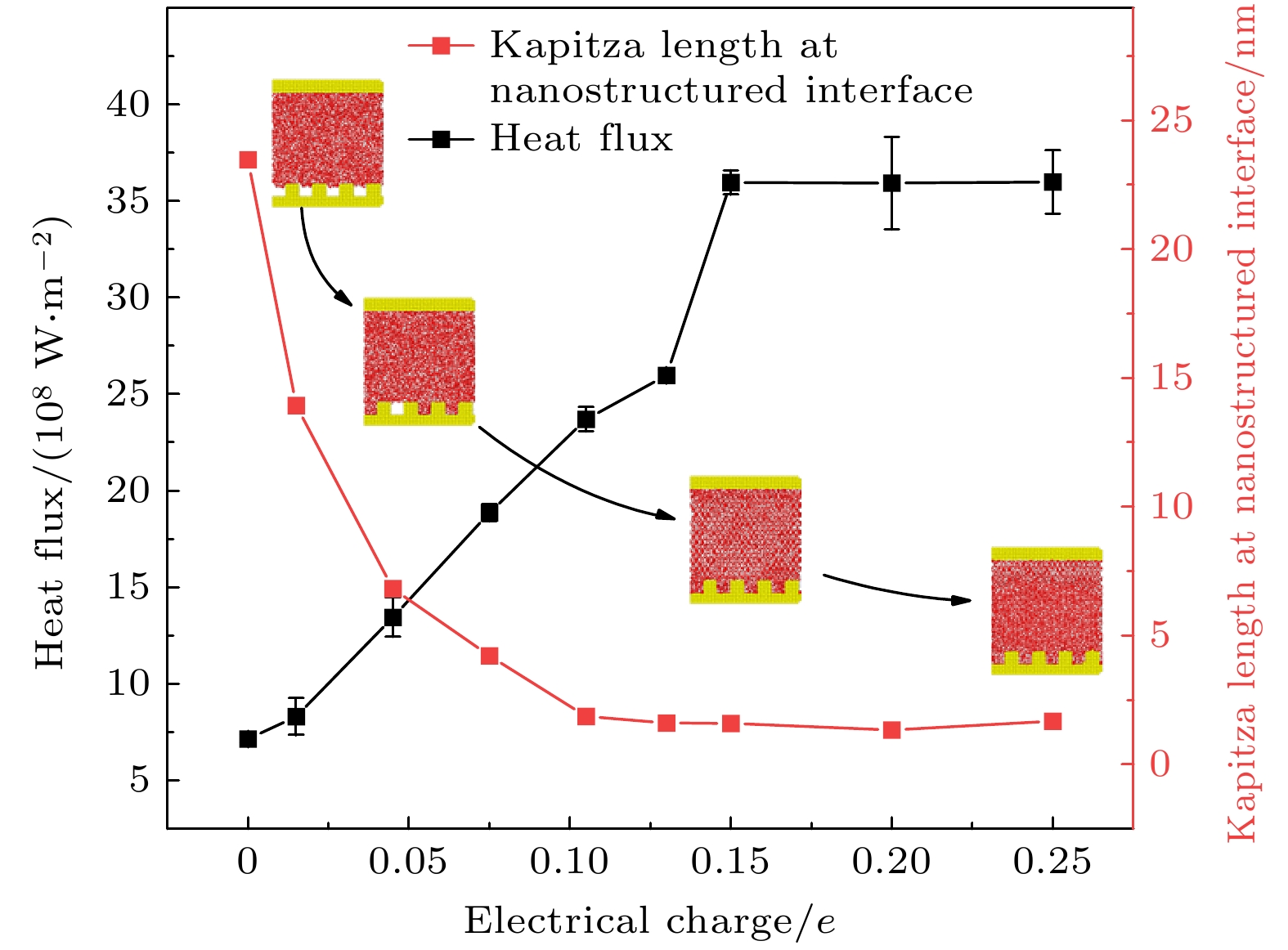
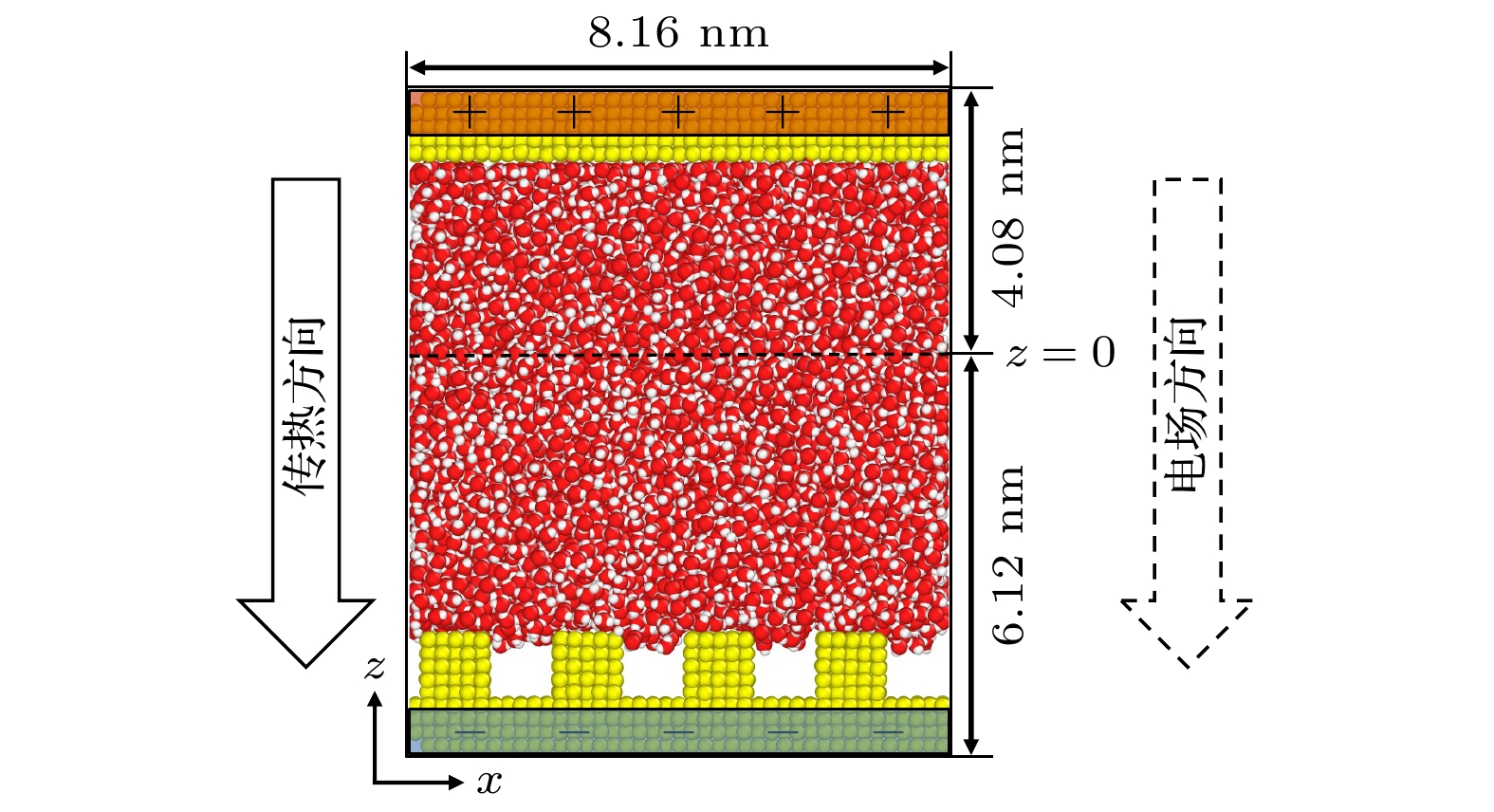
 DownLoad:
DownLoad:

